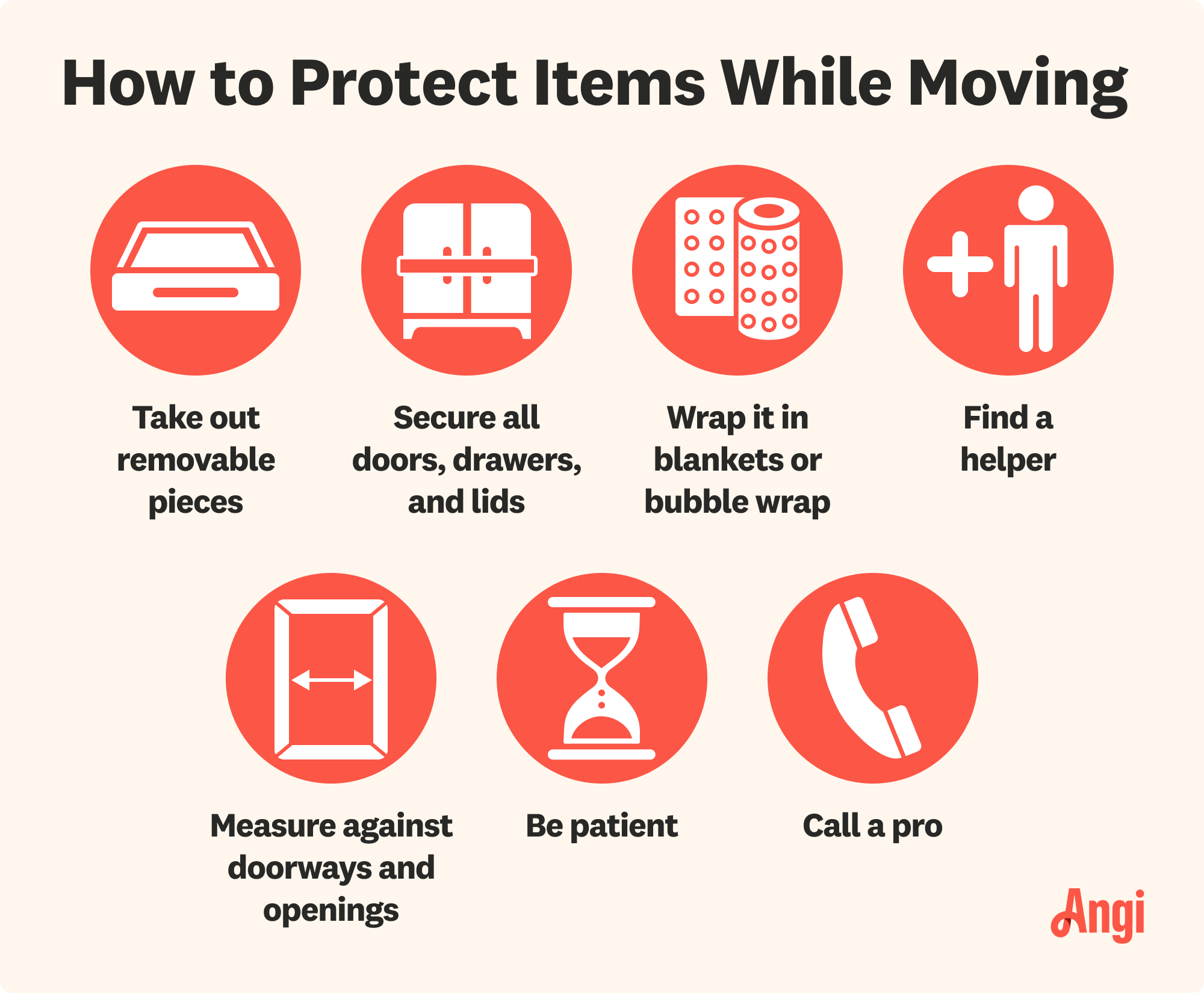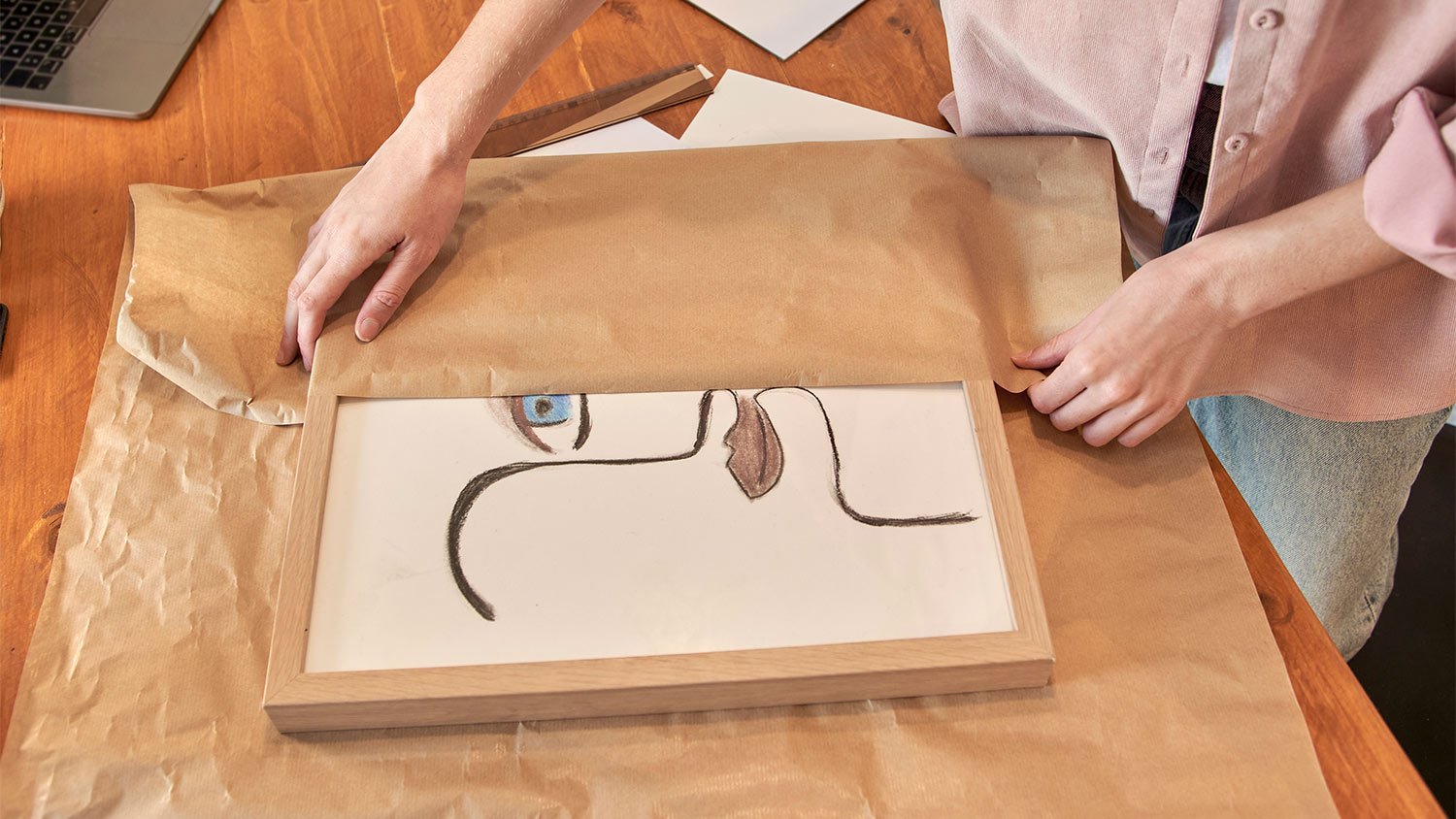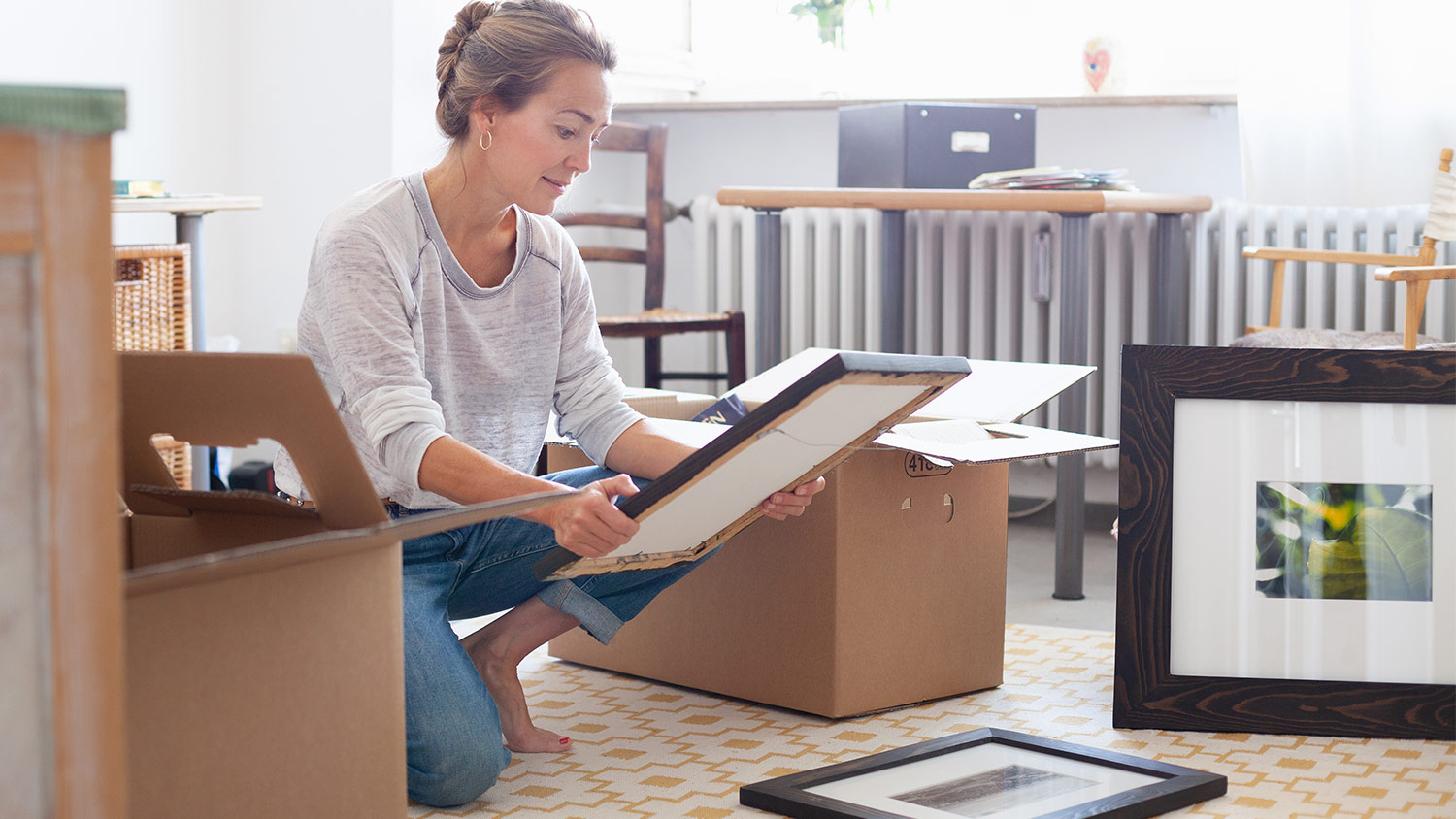How to Pack Pictures for Moving: 8 Pro Tips
We’ll help frame your packing decisions the right way to protect your pictures


Whether it’s photos, kids’ drawings with sentimental value, or priceless antiques with intricate frames, learning how to safely pack pictures for moving provides peace of mind. Follow these eight tips to help you wrap up your artwork so that everything arrives in its new home—whether that’s across town or in another state—in one piece.

1. Support the Glass With Tape
Add painter’s tape to your moving supplies list. You can cover the picture frame glazing with a large tape X to prevent the glass from shattering. Because, let’s face it, even though the right wrapping and padding minimizes the chance of the picture frame glass breaking, a heavy drop can still do damage. This step saves you from having to deal with tiny shards of glass if the worst happens.
Masking tape works, too, but it can be more tricky to remove.
2. Wrap With the Right Paper

Wrap your artwork in acid-free paper. This additional layer of protection helps prevent scratches, smudges, staining, or other damage to pictures—especially canvases without a glass covering.
While you can save money when moving by using newspaper for wrapping, don’t use it as the first layer on a picture because the ink can transfer to the piece. Also, avoid parchment paper, which can cause scratch marks. Water and grease-resistant glassine paper is a better choice.
3. Cover With Cling Film
If you’re worried about jostling during the journey, wrapping a picture tightly in a few layers of cling film offers an extra layer of protection. Start wrapping at the back of the piece, holding the first layer in place with painter’s tape. Then, finish it up like you’re wrapping a birthday present.
4. Protect the Frame Corners

Picture frame corners are one of the first things to take a beating if any boxes slide around in the move. If you’ve got an extensive collection of artwork, buying cardboard corner covers provides an additional shock-absorbing buffer. If you’ve just got one or two pieces, you can fashion some yourself made from pieces of cut cardboard, styrofoam, or bubble wrap.
5. Pad Them With Bubble Wrap
Bubble wrap is one of the best insulators for moving delicate items. Wrap your pictures in several layers for maximum protection, with the bubbles facing inward to offer the best impact absorption. Tape the edges down to keep the bubble wrap from unraveling in transit.
6. Select a Sturdy Box That’s the Right Size
Using the right moving box that’s a suitable size and strength can be the difference between packing perfection and pain. Measure all your frames before ordering or taking a trip to the store to pick a size that’s a snug fit. Going too large means you’ll have to use more packing material or risk the picture bouncing around on the drive.
Sturdy double-wall corrugated construction shipping boxes designed specifically for shipping artwork or mirrors work well. Some even have additional foam inserts and built-in corner protectors. Selecting a four-piece adjustable telescopic box works well for large pieces of artwork.
7. Pack Out and Seal the Box

When you’re packing the moving boxes, carefully fill any gaps with packing paper or bubble wrap to prevent the artwork from jiggling around. Secure the box seams with packing tape. The last thing you want is for a picture to slide out of the box when you’re lifting it.
8. Label and Position the Boxes
You’re almost done. All you need to do is label the box so that if you’re hiring a local moving company, they know it’s a fragile item. Then, stand the box in an upright position. Lying it flat increases the chance of damage if you accidentally drop something on it during the move.













